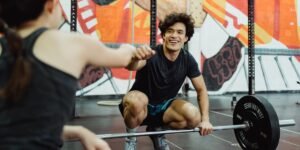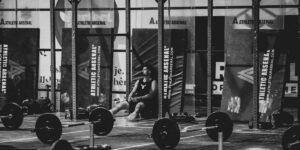Want to stay fit, strong, and healthy for life? Lifelong Fitness is for everyone, regardless of your age or current situation.
In this guide, we’ll break down everything you need to know about lifelong fitness, from defining the term to the key principles and actionable steps to use in your everyday life.
The best time to start is right now.
Ready to build sustainable fitness habits? Let’s dive in.
Table of Contents
Definition of Lifelong Fitness:
The definition of lifelong fitness is:
“The commitment to maintaining physical health, strength, and well-being throughout life.”
While there’s no official definition for the term, we can break it down:
- Fitness means: “the condition of being physically strong and healthy” (Cambridge Dictionary).
- Lifelong means: “lasting for the whole of a person’s life” (Cambridge Dictionary).
By merging these definitions, lifelong fitness simply means staying active, strong, and healthy at every stage of life, a commitment to continuous movement and well-being.
Whether you’re building your fitness from the ground up or maintaining the progress you’ve worked hard to achieve, it’s a continuous journey.
For our full breakdown on fitness, that goes beyond this, check out our post on What Is Real Fitness.
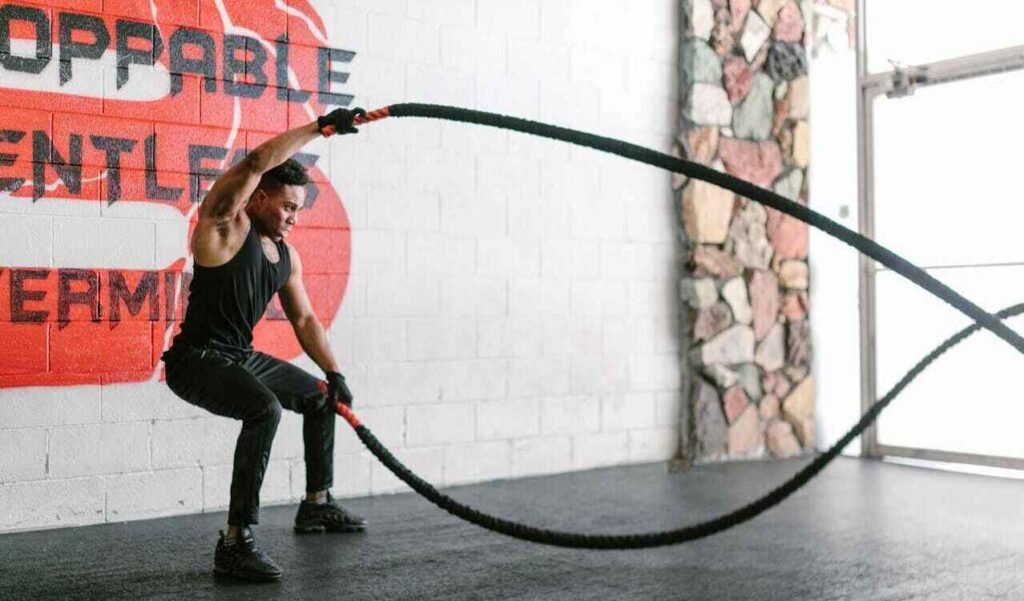
What Is Lifelong Fitness?
Lifelong fitness is about consistency, staying active in ways that suit your body and lifestyle while adapting as life changes.
It’s about making long-term commitments towards your health and fitness, and about setting the right fitness goals.
Studies show that regular exercise, even into old age, helps preserve muscle strength and function, slowing the effects of ageing. (source)
Instead of chasing quick results, the focus shifts to sustainable habits, adapting training methods over time, and embracing fitness as a core part of your life.
By building a strong fitness foundation, you set yourself up for lifelong health, ensuring you’re not just fit for a phase in your life but for the rest of it.
Before diving into real-life examples, we’ll first outline the key principles that form the foundation of lifelong fitness.
Tip:
Think of lifelong fitness as a continuous pursuit of movement, strength, and health, not a task to complete or an achievement to be had.

Main Principles of Lifelong Fitness:
To build a strong fitness foundation, it’s essential to focus on the main principles that support long-term health and performance.
Below, we’ll cover these main principles, why they matter, and how to apply them in your daily life.
While there are countless ways to stay active and up to 10 Components of Fitness that you could be working on, balancing your approach is crucial.
For example, if your sport or activity involves a lot of running, incorporating strength training can help build resilience and prevent injuries while reducing the need for extra cardio work.
Here are the main principles to incorporate:
1. Strength and Resistance Training
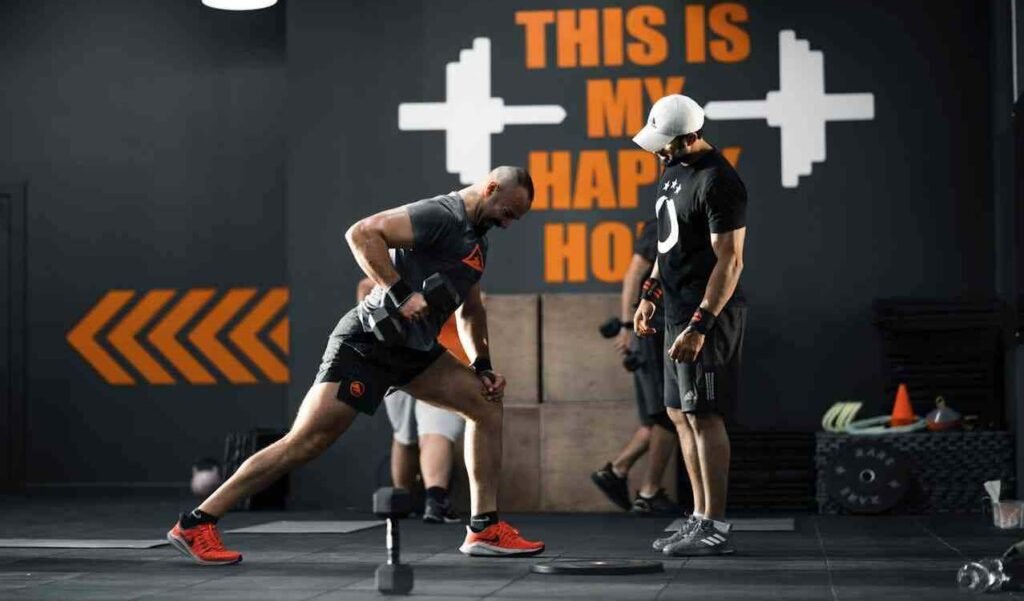
Why it’s important:
Strength training, also known as resistance training, involves working against resistance.
Whether that’s through weights, resistance bands, or bodyweight exercises. This is crucial for building and maintaining muscle mass, increasing bone density, and enhancing overall strength and function. (source)
Regular strength training improves musculoskeletal fitness, which directly contributes to long-term health, injury prevention, and quality of life. (source)
How to implement it:
- Focus on progressive overload, gradually increasing weight, reps, or intensity over time.
- Build your routine around key compound movements like squats, hinges, presses, and pulls for balanced strength.
- Aim for 2-3 strength sessions per week, whether at the gym, in a Pilates class, or at home using bodyweight exercises.
2. Cardiovascular Training (Cardio)

Why it’s important:
Cardiovascular training is essential for maintaining heart health and overall fitness.
Regular cardio strengthens your heart, improves lung function, and helps reduce the risk of Cardiovascular disease, which is the leading cause of death globally. (source)
How to implement it:
- Engage in activities like running, cycling, swimming, or hiking to strengthen your heart.
- Aim for at least 150 minutes of moderate-intensity or 75 minutes of vigorous-intensity cardio per week. (source)
- Mix moderate and vigorous sessions for variety and efficiency in your training.
3. Mobility and Stretching
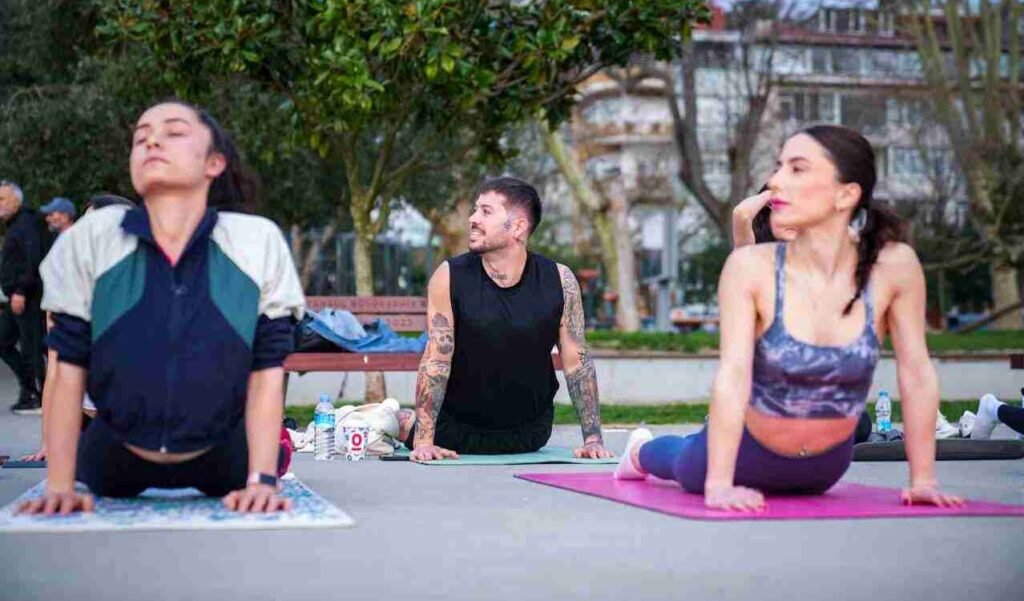
Why it’s important:
Mobility work helps maintain your range of motion, prevents stiffness, and reduces the risk of injuries.
Combining resistance training with mobility and stretching improves flexibility and movement efficiency. (source)
How to implement it:
- Incorporate dynamic stretches, yoga, or mobility drills at least 2-3 times per week for joint health.
- Use your rest days for light mobility work to aid recovery and prevent stiffness.
- Focus on tight or restricted areas, such as hips, shoulders, and hamstrings, to enhance movement quality.
4. Rest and Recovery

Why it’s important:
Proper rest and recovery are essential to maintaining consistent progress and avoiding burnout; they allow your body to repair and build strength.
Muscle recovery and nutrition are vital, as they address the main causes of fatigue and support muscle repair. (source)
Using both rest and recovery the right way will be most beneficial, more than any other ” recovery tools”. For a more in-depth explanation, where we covered that and more, check this one out: What Is Recovery in Fitness.
Here are a few little extras that you could start today:
How to implement it:
- Schedule rest days between intense workouts to allow muscle recovery.
- Prioritise 7-9 hours of quality sleep each night to support performance and recovery.
- Refuelling with nutrient-dense meals. While meal timing (30-60 minutes post-workout) can help, it’s more important to consistently fuel your body with good nutrition, as the timing’s effectiveness can vary. (source)
5. Nutrition and hydration

Why it’s important:
A well-balanced diet rich in protein, healthy fats, and nutrient-dense whole foods helps your body perform at its best while also supporting long-term health. (source)
Hydration is just as essential, as even mild dehydration can impact performance, energy levels, and recovery.
How to implement it:
- Eat a balanced diet with lean proteins, healthy fats, and nutrient-dense whole foods.
- Prioritise whole foods like fruits, vegetables, whole grains, and healthy fats over processed options.
- Stay hydrated by drinking at least 2-3 litres of water daily, adjusting for activity level and climate.
6. Consistency & Adaptability
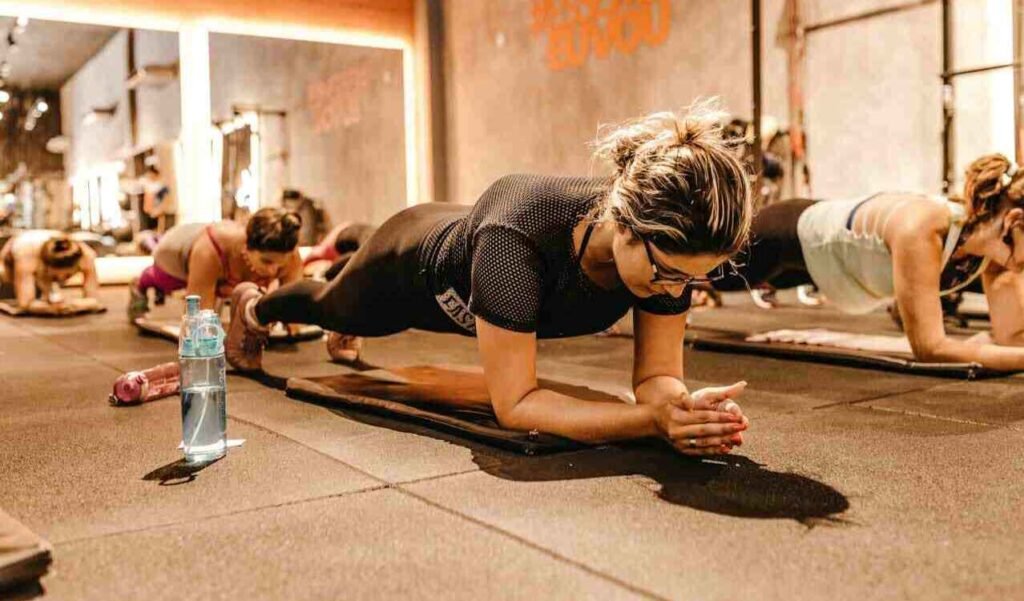
Why it’s important:
Lifelong fitness is built on consistency and adaptability.
Life happens: Injuries, work stress, and travel can all disrupt your routine and habits. But it’s vital to adapt, not quit.
Regular training is key to long-term success, even when life gets busy or things don’t go as planned.
How to implement it:
- If your usual routine isn’t possible, modify workouts by adjusting intensity or exercise selection.
- Stay active with shorter, more frequent sessions rather than skipping workouts entirely.
- Prioritise movement over perfection; even small efforts keep you on track in the long run.
Examples of Real-Life Scenarios:

Lifelong fitness isn’t a one-size-fits-all approach.
Whether you’re at home in your normal routine, facing an unexpected setback, or travelling the world, you can still maintain a healthy lifestyle.
Here’s how you can seamlessly integrate lifelong fitness into various aspects of your life:
Your Normal Routine

This is the stage where consistency is key, and you have the best opportunity to implement a well-rounded fitness plan, make new habits and stick to them.
You can focus on your favourite strength and resistance training, cardio, and mobility work while staying on track with nutrition and hydration.
What to Do:
- Stick to a balanced routine: strength training, cardio, and recovery.
- Experiment with new activities for variety, like swimming or cycling.
- Prioritise hydration and nutritious meals to fuel your body properly.
When Life Gets Busy

It’s easy to let fitness take a backseat when work, family, or other obligations pull you in different directions.
During these times, it’s important to rely on the discipline and habits you’ve built when things were “normal.”
Flexibility and focusing on the essentials will help you stay on track.
What to Do:
- Short, effective workouts (20-30 mins) still deliver great results.
- Wake up earlier to fit in brisk walks, quick runs, or bike rides for cardio.
- Use stretching, yoga, or foam rolling for stress relief and recovery.
- Meal prep to keep your nutrition in check.
Facing injury or illness

Sometimes, life doesn’t go according to plan.
Whether it’s an injury, illness, or other unexpected health problems, you might need to temporarily change your routine.
This doesn’t mean giving up, just adapting.
What to Do:
- Focus on recovery and modify workouts based on what your body can handle.
- Rest when sick; recovery is more important than pushing through.
- Prioritise nutrition and hydration to help in your recovery.
When You’re Travelling

Travelling often disrupts your usual routine, but it’s important to plan ahead, stay active, and maintain healthy habits while on the move.
I know how hard it can be and how much effort it takes, but I like to think of it as an opportunity to explore new areas and stay active in fun new ways.
Making fitness part of your travel experience can turn it into an enjoyable challenge rather than a disruption.
What to Do:
- Walk between destinations or do bodyweight exercises in your hotel room.
- Go for a run (my favourite way to see new places).
- Consider a gym day pass or use hotel gym facilities when possible.
- Choose balanced meals and pack healthy snacks during your travels.
- Make fitness fun by exploring local activities, like hiking or renting a bike or kayaking to see the sights.
Summary:
The question isn’t always “Do I have time to exercise?” but “What exercise can I fit into my schedule today?”
By viewing fitness as a flexible, adaptable part of your life rather than a rigid schedule, you can maintain consistency regardless of the obstacles.
Focusing on key principles like strength, cardio, recovery, nutrition, and adaptability will set you up for a lifetime of fitness.
No matter where you are in your fitness journey, now is the best time to start.
Looking more for the training and planning side of things? You can now find that here: how to train for lifelong fitness, where you’ll learn how to build your own sustainable routine using the three core pillars: strength, cardio, and mobility.
Now that you know what lifelong fitness is, get back to your life and training! It’s that simple after all.
There’s more to come, so follow Pioneer Gains on Facebook or Instagram for the latest posts and updates.
Have any questions or suggestions? Feel free to contact us here.
References:
- Cambridge University Press. Fitness. Cambridge Dictionary. Available at: https://dictionary.cambridge.org/us/dictionary/english/fitness
- Cambridge University Press. Lifelong. Cambridge Dictionary. Available at: https://dictionary.cambridge.org/us/dictionary/english/lifelong?q=Lifelong
- Larsson, L., et al. Lifelong physical exercise delays age-associated skeletal muscle decline. PubMed. 2014. Available at: https://pubmed.ncbi.nlm.nih.gov/24550352/
- American College of Sports Medicine. Resistance training is medicine: Effects of strength training on health. Curr Sports Med Rep. 2012;11(4):241-247. Available at: https://journals.lww.com/acsm-csmr/fulltext/2012/07000/resistance_training_is_medicine__effects_of.13.aspx
- Frontera, W.R., et al. Physiologic and functional consequences of sarcopenia in the elderly. PubMed. 2001. Available at: https://pubmed.ncbi.nlm.nih.gov/11665913/
- World Health Organization. Cardiovascular diseases (CVDs). Available at: https://www.who.int/health-topics/cardiovascular-diseases#tab=tab_1
- National Heart, Lung, and Blood Institute. Benefits of Physical Activity. Available at: https://www.nhlbi.nih.gov/health/heart/physical-activity/benefits
- Payette, H., et al. Nutrition, physical activity, and aging. PubMed. 2011. Available at: https://pubmed.ncbi.nlm.nih.gov/21694556/
- Frontera, W.R., et al. Sarcopenia in the elderly. PubMed. 2001. Available at: https://pubmed.ncbi.nlm.nih.gov/11665913/
- Oliveira, C.V., et al. Exercise and aging: Healthy musculoskeletal aging. PubMed Central. 2020. Available at: https://pmc.ncbi.nlm.nih.gov/articles/PMC9230724/
- Evans, W.J., et al. Physical activity and aging. PubMed Central. 2016. Available at: https://pmc.ncbi.nlm.nih.gov/articles/PMC5214805/
- Mitchell, W.K., et al. Muscle loss and exercise in aging. PubMed Central. 2020. Available at: https://pmc.ncbi.nlm.nih.gov/articles/PMC7071223/



